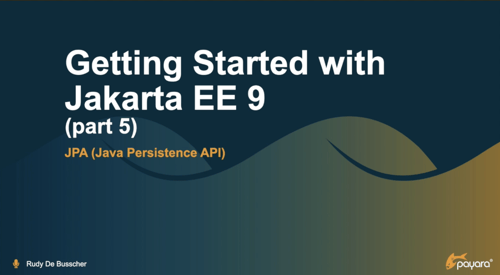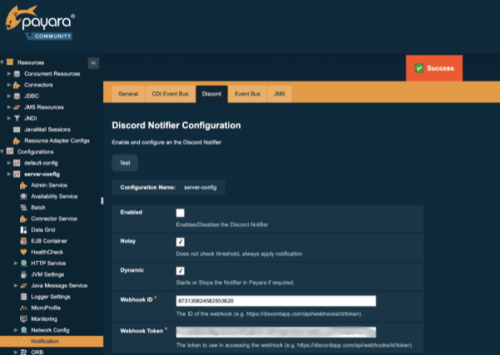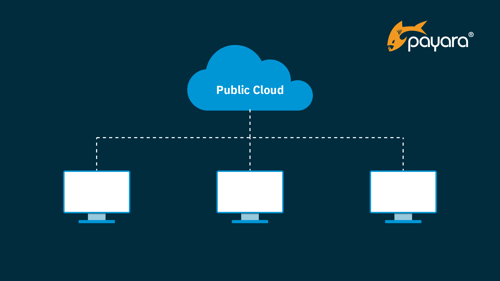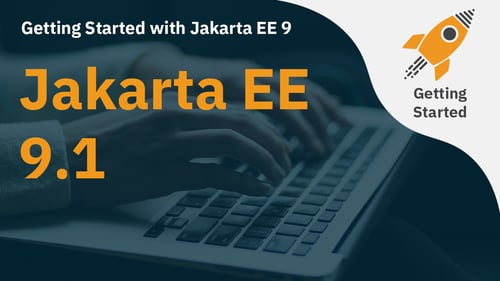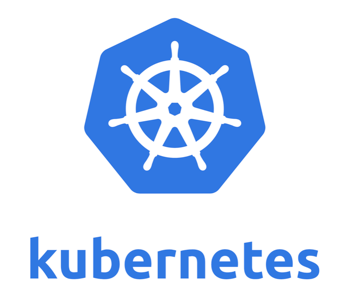Getting Started with Jakarta EE 9: Jakarta Faces (JSF)
Published on 24 Sep 2021
by Rudy De Busscher
Topics:
JakartaEE,
getting started with Jakarta EE
|
8 Comments
With Jakarta Faces, you can build user interfaces for web applications, including UI components, state management, event handing, input validation, page navigation, and support for internationalization and accessibility. It is a server-side framework that allows for rapid development of web applications, mainly administrative applications which are data entry and business logic heavy. The web pages are created by defining the components that are required and the events that are triggered by the user, and the rendering happens in a separate phase that can be customised to your needs.
In this blog, we mention a few features of Jakarta Faces 3.0 as it is one of the largest specifications of Jakarta EE 9.
Getting Started with Jakarta EE 9: Jakarta Persistence API (JPA)
Published on 22 Sep 2021
by Rudy De Busscher
Topics:
getting started with Jakarta EE
|
1 Comment
With the Jakarta Persistence API, the system can perform the serialization of Java Objects into the Database or read data into objects. You can use Jakarta JPA to read and write Java instances easily from and to the database.
With the help of annotations on Java classes and instance variables, the mapping is defined between the Java world and the database world.
In this blog, we cover some of the basic aspects of the JPA specification and how you can use it. The specification is rather large so make sure you also consult some documentation and other resources to find out all the capabilities of the specification.
Client Certificate Authentication Improvements in Payara Server July and September 2021 Releases
Published on 17 Sep 2021
by Rudy De Busscher
Topics:
What's New,
Security,
Payara Server 5,
New Releases
|
3 Comments
SSL certificates are used for several features within Payara Server. You can configure your custom certificate for the TLS based connections the Payara Server is serving when using a custom domain name. And those certificates can be used for authentication purposes to identify the caller, mainly in a machine to machine communication.
With the July and September 2021 Payara Server releases, we have implemented two new features to improve the usage of these custom SSL certificates.
Additional Features for OpenId Connect with Payara Platform
Published on 01 Sep 2021
by Rudy De Busscher
Topics:
OpenID
|
2 Comments
With the release of the Payara Platform products in August 2021, we have added some additional features when you are using the OpenID Connect option within Payara Platform products.
How and When to Disable Domain Data Grid in Payara Server
Published on 31 Aug 2021
by Rudy De Busscher
0 Comments
Payara Server comes with the Domain Data Grid, a very powerful feature related to the clustering capabilities of the product. If you're deploying the application on the domain server itself and are not using any clustering options, it's possible to disable the Domain Data Grid to slightly reduce Payara Server's start up time - but should you?
The Domain Data Grid can be disabled but be aware that a few other features in Payara Server also depend on the Domain Data Grid.
Monitoring JMX Using the Notification Service
Published on 11 Aug 2021
by Rudy De Busscher
Topics:
How-to,
JVM,
Monitoring,
JMX,
Notifier
|
2 Comments
Within Payara Server, the JMX system is used to store all the data that the monitoring service captures of the modules within the runtime.
You can use any tool that can connect to the JMX system to collect these data and monitor the environment. Besides this direct access, the notifier service can send this information to various channels so that the data can be integrated with external systems.
The Notifier service is modular since October 2020 with version 5.2020.5 so that you can include only those notifiers that you are interested in and use within your environment. These notifiers cover a wide range of channels, from typical destinations like email, JMS Queues, over APM tools like DataDog and NewRelic to communication platforms like Teams, Slack, and Discord.
In this blog, we take a look at enabling JMX Monitoring for the JVM Heap Size, monitoring the process Heap Size, and then sending that information to a Discord channel.
Why Use Alibaba Cloud with Payara Platform?
Published on 05 Aug 2021
by Rudy De Busscher
Topics:
Cloud,
Alibaba Cloud
|
0 Comments
We are all familiar with Microsoft Azure, Google's GCP, or Amazon's AWS platform for running applications in a public cloud. But there are also other, lesser-known platforms like Alibaba Cloud. And while many don't know this platform, it is by far the largest one in the Asia Pacific region and even the third largest cloud provider worldwide. Alibaba Cloud has some interesting features.
In this blog, we explore some aspects of the platform and how it can be used with the Payara Platform.
Getting Started with Jakarta EE 9: Jakarta EE 9.1
Published on 19 Jul 2021
by Rudy De Busscher
Topics:
getting started with Jakarta EE
|
0 Comments
Jakarta EE 9.1 was officially released at the end of May 2021. The objective of Jakarta EE 9.1 is to provide certification on Java SE 11 and not to deliver new features. These are scheduled for Jakarta EE 10.
In this blog, we describe how you can use Jakarta EE 9.1 and some background around Jakarta EE 9.1.
How to Update An Application Using JAXB from JDK 8 to JDK 11
Published on 18 Jun 2021
by Rudy De Busscher
Topics:
JDK 8,
Payara Platform,
JDK 11
|
1 Comment
The Java Architecture for XML Binding (JAXB) framework is used to easily convert between XML and Java class instances. You just have to define some annotations on the Java classes and properties and the framework uses those definitions to convert between them. But is also heavily used within the Java EE specification Java API for XML Web Services (JAX-WS) that implements the support for SOAP messages within Java Enterprise.
Do You Really Need Kubernetes?
Published on 09 Jun 2021
by Rudy De Busscher
Topics:
Cloud-native,
Kubernetes,
Containers,
Payara Cloud
|
0 Comments
These days, it seems Kubernetes is a topic that is never too far from people's lips. The tool, and the associated tools built around it, are talked about so often it seems it's the only subject important to developers these days - especially as the IT world becomes increasingly orientated towards cloud and microservices.
But in spite of all the conversation around Kubernetes... do you really need Kubernetes for your environment? Or is it just another case of the next 'new and shiny' object, with people distracted by the novelty and possibility, rather than the facts? In this blog, I'll take a closer look at why Kubernetes might be a case of the hype outweighing the helpfulness in most cases.
.jpg)

